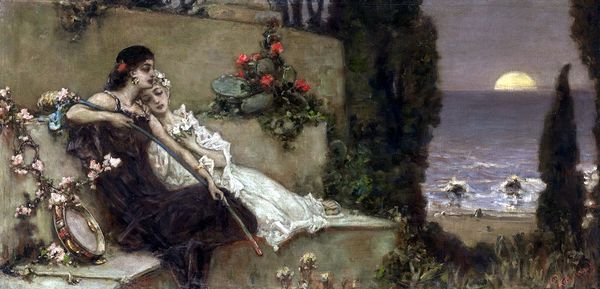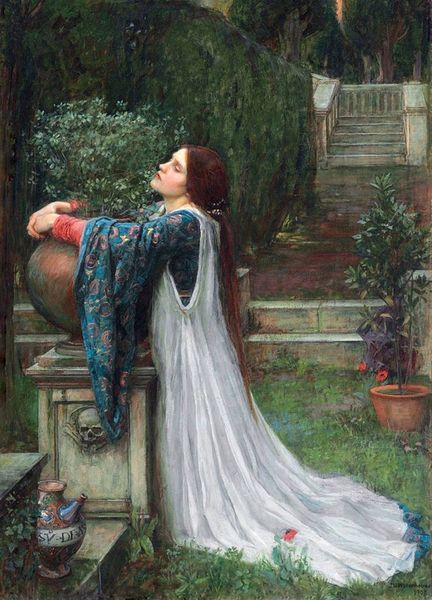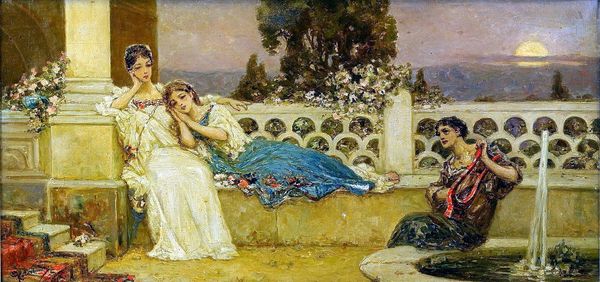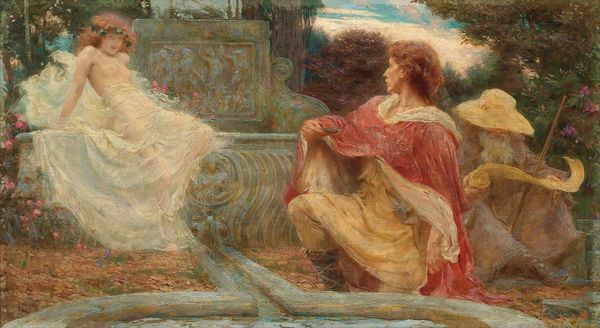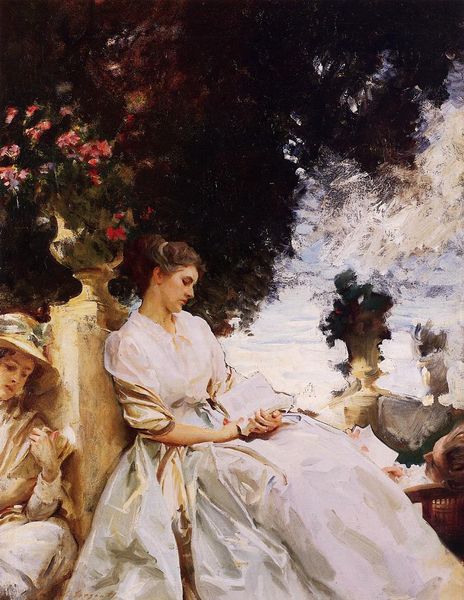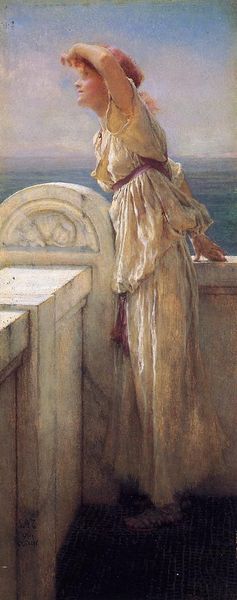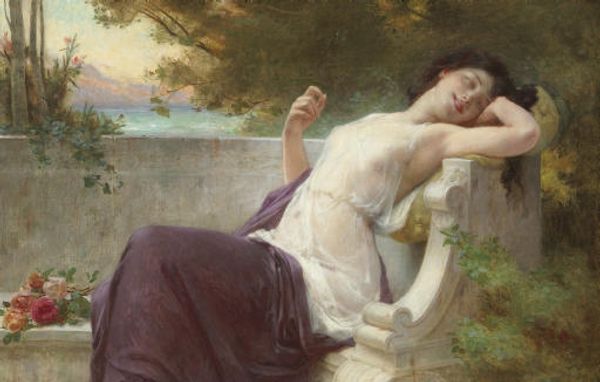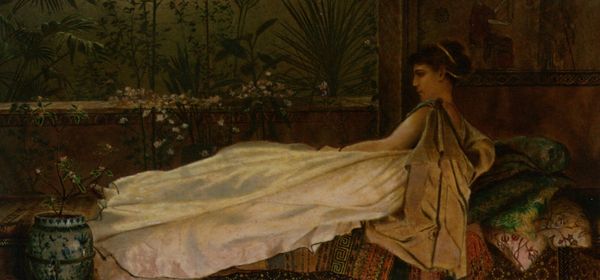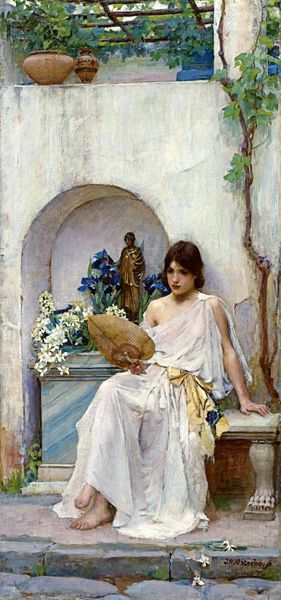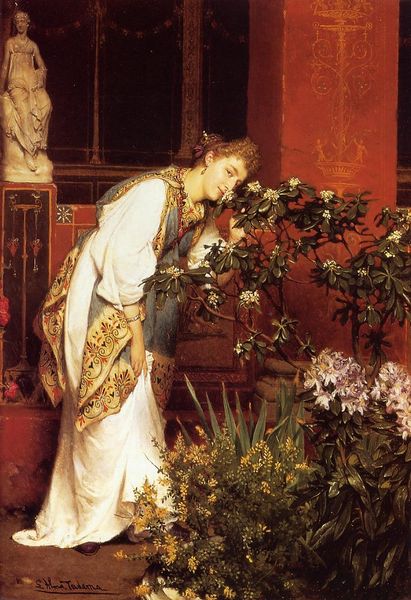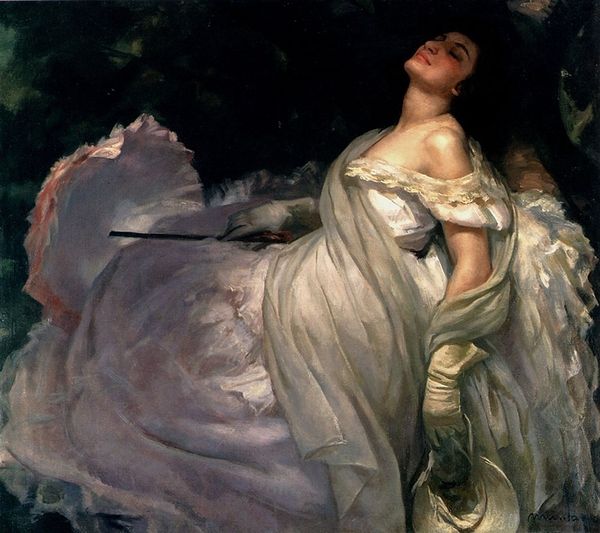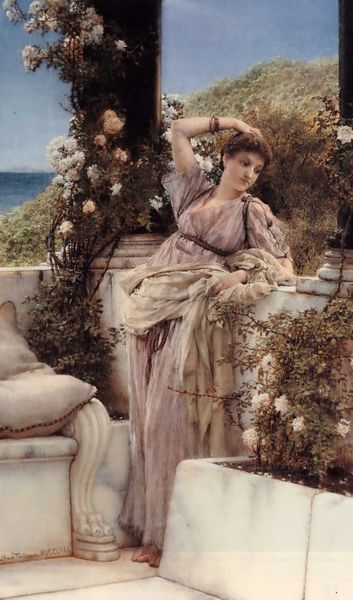
painting, oil-paint
#
gouache
#
painting
#
oil-paint
#
landscape
#
figuration
#
romanticism
#
cityscape
#
genre-painting
Copyright: Public domain
Curator: "Evening Silence" by Wilhelm Kotarbinski offers a beautiful vision. I immediately see reflections on power dynamics, possibly of unspoken tensions between the women depicted in this dreamy landscape. What is your first reaction to this artwork? Editor: Immediately, the textures and light strike me. The rough stone against the shimmering fabrics. It's all oil and gouache, isn't it? You can almost feel the cool dampness of the evening. Curator: It feels timeless, yet placing it within the romanticism movement provides a crucial understanding. Romanticism provided a vehicle to investigate emotions, personal narratives and historical and cultural contexts. Who are these women and what do they feel about their condition? What is the relationship? Editor: True. The materiality definitely contributes to that mood. It feels almost theatrical – look at how the paint is applied to suggest the crumbling edges of the stone terrace. There’s something very constructed about that ‘natural’ setting, a staged backdrop, like those old murals, reflecting a certain taste of a very privileged elite and their entertainment. Curator: Absolutely. The theatrical backdrop highlights a curated space. Consider the visual narrative presented – are the subjects presented complicit, or are they resistant? Note that genre painting and cityscape all converge in the portrayal of an atmosphere filled with quiet contemplation. Editor: I find myself wondering about the conditions of its creation. Kotarbinski and the processes involved in getting that pigment onto that surface. Was there a studio assistant who mixed those paints just so? The tamborine almost suggests a moment of revelry, or work of playing music and entertainment which suggests a world that we the viewer, have just stumbled upon at its quiet conclusion. What was used as base for these colours? Curator: This reading aligns with a critical intersectional framework where we begin to examine not only what the artwork shows, but also who is empowered to produce such images and under what socioeconomic conditions. We need to always acknowledge the inherent complexities involved. Editor: Agreed. It pulls together into a coherent image; thinking through its means of creation gives a different nuance to these "genre paintings." It reminds us that this scene, as pleasant as it seems, results from artistic and industrial labor, not just divine inspiration. Curator: It really makes us pause and consider who is in the picture and, ultimately, who is left out of the frame. Editor: Indeed. Seeing those textures, I can almost feel it was Kotarbinski wanted the viewer to know these were all carefully constructed choices.
Comments
No comments
Be the first to comment and join the conversation on the ultimate creative platform.
